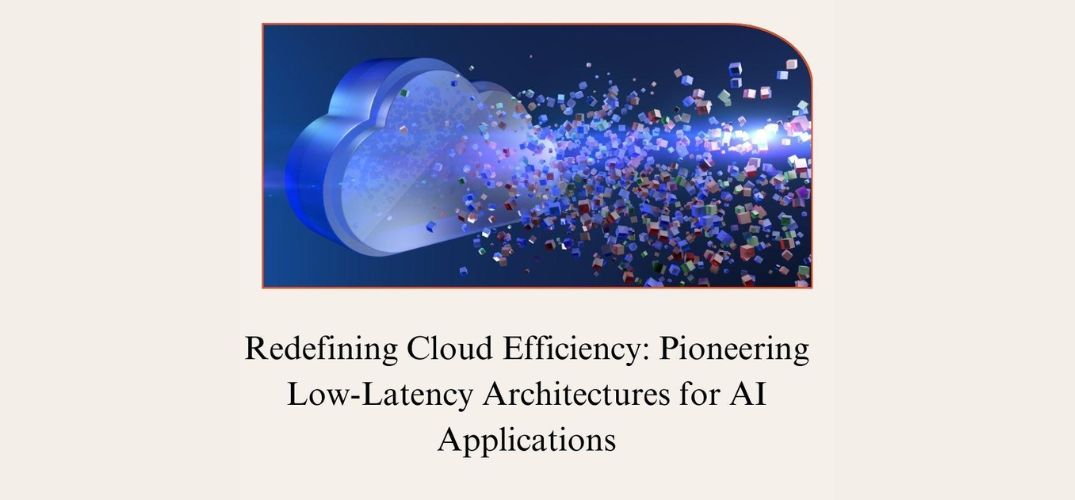A renowned innovator in cloud computing and AI systems, Sandeep Konakanchi presents a groundbreaking framework for next-generation cloud architectures. His work focuses on achieving ultra-low latency to meet the stringent demands of real-time AI applications. This article delves into the critical innovations underpinning this architectural revolution, promising transformative impacts across industries.
The Growing Demand for Real-Time Cloud Solutions
The surge in AI applications demands cloud systems capable of sub-10 millisecond response times, critical for sectors like finance, healthcare, and autonomous systems. Traditional batch-processing architectures fall short, highlighting the urgent need for innovative frameworks to handle massive data volumes with minimal latency, ensuring real-time operational efficiency and reliability.
Edge Computing: Bringing Processing Closer to the Data
The proposed architecture leverages edge computing to minimize data transmission delays by deploying processing nodes within 10–30 kilometers of data sources. This reduces average response times from 100 to 15 milliseconds and cuts bandwidth usage by 75%, ensuring faster, efficient handling for IoT and mobile applications demanding immediate responses.
Intelligent Resource Allocation: Smarter Scaling for Efficiency
Reinforcement learning-powered dynamic resource allocation optimizes cloud resources by analyzing 38 real-time metrics, achieving 93.8% accuracy and reducing costs by 44%. Elastic scaling responds to demand surges within 3.4 seconds, crucial for managing unpredictable workloads in real-time AI applications.
Optimized Data Flow: Precision Meets Speed
The architecture utilizes predictive data placement and adaptive batching, reducing retrieval latency by 63.2% and enabling 725,000 transactions per second with sub-8 millisecond latency, ensuring high-quality, responsive AI-driven system performance.
Resilient and Distributed Systems for Reliability
Fault tolerance and distributed state management play pivotal roles in ensuring system stability. The architecture’s multi-tiered caching mechanisms achieve cache hit rates of 88.7%, reducing initialization delays by 83%. Distributed fault recovery systems further enhance resilience, recovering from failures in as little as 3.4 seconds. These innovations ensure that critical systems maintain 99.95% availability, even under challenging conditions such as network disruptions or resource contention.
Innovations That Transform Industries
The framework’s impact extends across several industries, driving measurable improvements in efficiency and performance:
- Healthcare: Real-time patient monitoring systems now process millions of biometric data points with 99.92% accuracy, enabling faster detection of critical conditions. These advancements have reduced false alarms by 64.5% and improved early intervention rates for acute conditions by 38.4%.
- Finance: Fraud detection systems leveraging this architecture analyze 780,000 transactions per second, identifying anomalies with 98.7% accuracy. The result is a 76.5% reduction in fraud-related financial losses, along with improved trust in digital financial ecosystems.
- Autonomous Systems: Real-time sensor processing capabilities support autonomous vehicles, handling over 1.2 million data points per second. These systems achieve navigation decisions with an average latency of just 5.7 milliseconds, ensuring reliability even in dynamic environments.
Addressing Cloud Computing Challenges
The proposed architecture effectively tackles persistent challenges in cloud systems, such as network latency, data consistency, and scalability. Intelligent load-balancing algorithms optimize traffic across distributed environments, reducing response times by 54.6% and cutting operational costs by $8,500 monthly for mid-sized deployments. Meanwhile, advanced caching strategies reduce data access latency by 92%, maintaining 99.92% consistency in frequently accessed data.
These solutions also address the limitations of conventional scaling mechanisms. Traditional auto-scaling systems often require 5–8 minutes to respond to demand spikes, causing service degradation. In contrast, the proposed architecture dynamically adjusts resource allocation within seconds, maintaining high availability and delivering seamless performance even during peak loads.
A Blueprint for the Future of Cloud Computing
As AI applications continue to evolve, the need for responsive, efficient, and reliable cloud architectures will grow exponentially. By integrating cutting-edge technologies such as edge computing, adaptive resource management, and AI-driven optimizations, this framework sets a new standard for performance and scalability in cloud systems. Its ability to maintain low latency, high reliability, and cost efficiency makes it an indispensable asset for businesses across industries.
In conclusion, Sandeep Konakanchi’s pioneering framework represents a significant leap forward in cloud computing, offering a blueprint for building robust, real-time systems that empower innovation and redefine operational excellence.



































